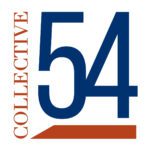In this session, we delve into the pivotal function management meetings serve during the intricate process of selling a firm. We’ll explore how these gatherings can effectively showcase the company’s strengths, address potential concerns, and foster a sense of trust and transparency with prospective buyers. Attendees will learn how to leverage management meetings to not only impress buyers but also to secure a favorable sale outcome.
TRANSCRIPT
Greg Alexander [00:00:15] Hey, everybody. This is Greg Alexander, the host of the Pro Serve podcast. Brought to you by Collective 54, the first community dedicated to founders of small services firms trying to grow, scale and someday sell their firms. On this episode, we’re going to talk about the mechanics of exiting your firm. In particular, this thing called the management meetings, which typically happens during due diligence. And we’ve got a well-respected, long-tenured, well-liked member of Collective 54 with us today. His name is Matt Rosen, and Matt has recently gone through his successful exit and lived through the management meetings and has a lot to share with us. So, Matt, as always, it’s great to see you. Thanks for being here. And would you introduce yourself to the audience?
Matt Rosen [00:01:08] Yeah, too kind of an introduction, Greg. Thanks for having me on the podcast. So I’m Matt Rosen and I’m founder and CEO of A Leader. A Leader is a consultancy focused on digital excellence that helps our clients with everything from technology, strategy and user experience through custom dev integration data and then supporting the solutions that we build. And so we went through an entire process and an exit to an investor about a year ago. And it’s been a really a great experience, better than I actually thought it could be. And Collective 54 was a great help at every step along the way.
Greg Alexander [00:01:48] Great. All right. Well, let’s jump into it. So we’re going to talk about management meeting. So let me start with the very basics, Matt. So you went through this exit. Give us a definition of the management meeting or meetings and kind of. When did that happen? And walk us through the basics of this.
Matt Rosen [00:02:10] Yeah. So we actually started looking at options in 2021 where I’d say we had a few dates where we had an investment banker bring us both a private equity firm and a strategic. And so they came in and spent some time with us. But it was in 2022 we really went through a formal process where we built a SIM, did equality of earnings, sent it out, and then we really had two stages of meetings. We had what they termed as fireside chats. So this would be a one hour conversation with the prospective buyer. And it was only after we had an intent of interest or an IOI that we actually did management meetings which were like a four-hour onsite session. So for the fireside chats, these were more of an introduction. These were mostly held via Zoom teams, virtual meeting with other the we really looked at a couple of different classes of buyers. There were strategics, there was private equity-backed strategics, and then there was private equities that were looking for us to be the platform. We decided early on that the only way we were going to do a transaction was if we were the platform and we were the right size and had the right team to do that. And so as we were evaluating different options, it was myself, my chief operating officer, my chief strategy officer that were involved in the majority of the meetings, both at the fireside chat stage and then the management meeting.
Greg Alexander [00:03:39] Okay, perfect. So let’s talk about the fireside chats first. So one our Zoom meetings, three people from your team with potential acquirers on the other end of the line. The objective is an introduction. So tell me a little bit about what was covered during those meetings and how you prepared for them.
Matt Rosen [00:04:00] Yes. So everyone had our SIM and our quality of earnings, so they already had a base understanding of our business. So I think a lot of it was just trying to for them to understand us, who they were talking to and for us to understand them. And I wish I could say we did tons of prep. We really showed up and just shared who we were and what we were looking for. We had rehearsed things like, Hey, what’s the one question we don’t want to get asked? And, you know, we’re places they’re going to take us that we need to have prepared responses. And so we practiced those. But really, once the fireside chats got going, we were doing a couple of day. We probably did. I would say somewhere between 15 and 20 of them. And at this stage, I was really more evaluating the prospective buyers than they were probably evaluating me. And the ones that I really respected were the ones that asked, Why? Why are you all here? Why do you want to do a transaction? What are each one of you looking for? Professionally and personally out of this? And there was only a couple of them that really asked that question. And so it was kind of funny. We actually knew who we were going to. Our top choice was after the fireside chat. Now, obviously, we kept everybody else engaged to keep a competitive process going, but it was pretty apparent early on to who we wanted to partner with. Yeah, but the type of questions they asked was, you know, tell us about the founding of the company. Tell us about what each one of you does. Talk about, you know, top clients talk about how you retain your people. It’s all very, I would say, basic and high-level information that, you know, frankly, is in the same. I think they just want to see how you’re going to answer it. So I found the fireside chats to be, you know, light engagement. And it was interesting. There were some of the big strategics that literally just wanted to tell you their process, asked very few questions. And so we eliminated some of those very, very early on because there were those that were looking to stroke of a true partnership and those who just want to acquire a bunch of people and capabilities and push us to the side. One story I will share that one of the groups that came in to look at us as a platform had the audacity to come into the fireside chat and tell me that they went from founder-led to professionally managed. So the three of us walked out of that meeting and debriefed and were like, Well, all of us can be out of a job in about 18 months if we choose this group. So we kept them around and I won’t name them for confidentiality purposes, but you know, they were really rough to deal with throughout the process and were exactly what I didn’t want a private equity sponsor. So it was good to have that contrast when we actually were serious about, Yeah.
Greg Alexander [00:06:33] You know, and you were very fortunate and that you’ve built a great firm and it was growing, so you had a ton of interest. So 15 to 20 fireside chats was appropriate, you know, for, for members that might not be in that similar situation, they’re not at the same scale that Matt and his team are at. You might have fewer of those, but, you know, the goal was an introduction and it sounds like, you know, it was a bi-directional introduction and it served its purpose. All right. So let’s move to, you know, the official management meeting, not the fireside chat, but the real one. So tell me a little bit about you mentioned they were 4 hours in length, so quite a bit more intensive. Walk me through that.
Matt Rosen [00:07:11] Yeah. So we were very fortunate, as Graham mentions, you know, we probably did 15 to 20 fireside chats. We had 11. I was actually a few people tried to preempt the process with letters of intent, but we said we wanted to go through the management team meetings before we signed off on an otherwise. So we invited, I think it was five groups to Dallas. One of the groups is actually based in Dallas. We just went to their offices, but we sat down in an afternoon session in a board room and walked through our SIM in detail. Oftentimes they had prepared a pitch of what a partnership with them would look like. To help us understand how would this relationship work? What would the board look like, what would their responsibilities be? You know, would they have an operating partner not have an operating partner? Then they really asked us a series of intensive questions and they dug pretty deep. I mean, they did their analysis. We did have some concentration risk, so they dug really, really deep into those relationships and really got to know who they were with. What was the nature of the work, How were we building it, what was the structure of the teams? And so they went pretty deep during those those four hour sessions. And after that, we either did a lunch or a dinner, which was, you know, them getting to know us as people and us getting to know them. And so those management team meetings required a bit more prep. We had wanted to representatives from our banker in the room with us, you know, to help with any detailed financial questions. But at this point in time, you know, they’d been exposed. We’re a data room. They pretty much had access to everything we had to share. We had nothing to hide. You know, we were fortunate not having any lawsuits or crazy things that happened. We run a pretty clean set of books for three years since I founded it. And so a lot of the questions we got that were the most challenging were really just around customers, people retention, what were plans to grow. We also shared with them we had a list of acquisition targets that we wanted to go after, and that’s part of the reason we took on an investment is I had never done M&A. I don’t know how to go to the capital markets and get money. And so we were looking for the expertise of a private equity partner that could bring both of those and take on some of the risk and let us take some chips off the table and recapitalize the company.
Greg Alexander [00:09:27] So who was in the room? So it was it the same three you, your CEO, your chief strategy officer, plus a couple of people from your banker? And then who was in the room from the. Party?
Matt Rosen [00:09:40] Yes, a good question. So we had two or three strategics and then three private equity platform meetings. And so when we met with the strategics, it would be their president, their head of M&A, and maybe a key person or two that we’re going to be involved in the integration that would be there. And we kept a really tight circle at later on the entire process. Almost nobody outside of the three of us knew other than our controller and our CTO, until the very, very end. We reveal it to them literally a week before we closed. And it was a really positive thing because we I give a lot of my rolled equity to our senior leadership team. It really sent them to stay. And so it was it was a good situation that we were able to explain. So during the strategic meetings, it was three or four people from their end, it was me, my CEO, Phil Leary, my Chief strategy officer, Trish Webb, that were that were in the room. And then literally the banking team head, Greg, who was the lead banker, and he had a team of four that were part of it to the transaction. And so it would be one or two of them that would be there for the meetings. One was the platform meetings. They were bringing the 2 to 3 folks that were going to be on our board. And so we got to see who we were going to be working with day in and day out over the next 3 to 5, seven year old period as we got to know them, because obviously those are the people who are going to be working with very closely. So there’s no bait-and-switch type scenario that we were talking to the folks that were going to be our board and our team until the next transaction. Yep.
Greg Alexander [00:11:11] You mentioned Greg. That’s Greg Fink from Equity Tech, who’s also a member of Collective 54, and he was Matt Rosen’s banker. I’ve seen Greg execute these meetings. I’m assuming that Greg and his team played the role of facilitator. Is that correct?
Matt Rosen [00:11:26] They did. They would tee up the meetings, they would organize that, they would get the agenda out ahead of time and they would keep things untracked. They were also really helpful when there was a really deep financial question asked, they were able to jump in, but for the most part it was the my myself and my senior leaders that really led the meeting and of really tried to have them do a lot of the talking. Obviously, they know the aspects of the business at a more detailed level than I did, and I was very fortunate to have Phil interest, you know, in the trenches with me preparing all the information and being there to present it and explain it to our potential suitors.
Greg Alexander [00:12:01] Yep. And the content of the meeting was the same, correct?
Matt Rosen [00:12:06] I’m sorry.
Greg Alexander [00:12:07] The content of the meeting was the same as that, correct?
Matt Rosen [00:12:11] The content of the meeting was the same, but generally what they were, it was very similar. They wanted to understand what was the founding story. What? How did we go to market? What did our customers look like? What type of work were we doing? What did we incent our people? And we retain our people? What differentiated us? What were our service offerings? And then it turned to, Well, if we become your partner, how are you going to grow? And that was more so in the platform conversations. They really wanted to understand who are we going to acquire, what strategic directions, where are we going to go, how are we going to expand our ability to go to market? When it was the strategics, it was more a conversation of how, how and where were we going to fit into their team?
Greg Alexander [00:12:54] Yeah. Okay. You know, a point that I would like to add for listeners is that, you know, Matt suggested that he let his executive team do a lot of the talking. And that’s really smart. And that’s something that all of us should pay attention to, because when somebody is in a management meeting, an investor or strategic thinking about making an acquisition, they want to make sure that there’s a real team. You know, there’s not an overdependence on the founder because, you know, God forbid something happens to the founder, you know, does the firm fall apart? So it’s really important to have a solid management team in the management meetings. And I think that’s why these meetings are called management meetings, in part is to assess the quality of the management team. All right, Matt, one last question before we wrap it up here is, you know, was this a high-stress moment for you? And, you know, and looking back on it now, was the stress appropriate or were they easier than you thought they were going to be? Kind of give us a retrospective?
Matt Rosen [00:13:49] Sure. Yeah. So I’m sitting here. The transaction happened in September of 2022. So we’re know, 13 months in now. And looking back on it, you know, the process itself was not quite as grueling as I had envisioned it to be, at least not the fireside chats and the management team meetings. I mean, I had to get together with people and talk about my business, and that’s what I do all day long. I would say it was by much more stressful for my CFO and Chief strategy officer, as well as our controller, who had to put together a lot of the documents in preparation meeting. I think they had a bit more PTSD around the process than I did. You know, the meetings themselves. We were very fortunate. We didn’t have to sell the business. Not everyone’s in that position. So we went into it and I started almost every meeting saying if I can’t look my people and my clients in the eye and tell them this is good for everyone, not just me and my leaders, we’re not going to do the transaction. So we were in a position of strength from a negotiation standpoint with with all the suitors involved. And we had a lot of suitors at the table. Kotek and Greg ran a great process and had a lot of good options for us. So we were fortunate and the timing was right. And so I would say the hardest part was once we signed and although I went through due diligence, you know, where I got most heavily involved in the negotiation of legal contracts and employment agreements, the non-compete and all all the equity structure, I would say that was the most stressful part was the last couple of weeks leading up to closing. But the process itself of getting people interested in our business and talking about what we do, I actually found that kind of fun. You know, the only downside to it and anyone who goes through the process is you’ve got to have people kind of running the business as you’re selling the business because it’s easy to get distracted. And I think this happens with every firm is, you know, the whole process, you know, either ends with a sale without a sale, but with key leaders not keeping an eye on the ball, the business things do tend to slip. And so I think an important thing to think about if you’re about to go through a process, is make sure you have people that can sell the business, make sure you have people to run the business because it becomes a full-time job being part of a deal team.
Greg Alexander [00:15:53] Yeah, that’s good advice. It is all time-consuming for sure. Okay, so let’s just put a bow on this thing. So we’re breaking down the mechanics of an exit. And today we spoke about one element of it, which was this mystical thing called the management meetings. And we learned that there’s really two types is the fireside chat. And then there’s a formal management meeting, and we learned a little bit about what their goal is, why they happen, who attends them, how you prepare, what’s covered, etc.. And and we heard from Matt Rosen who recently went through this. So so Matt, on behalf of all the membership, as always, thanks for coming and giving back to the community. Really appreciate it.
Matt Rosen [00:16:31] But be on. Thanks for having me.
Greg Alexander [00:16:33] All right. Well, a couple of calls to action for those that are listening. So first, if you’re a member, look for the meeting invitation formats, Q&A session, where you can ask him your questions directly of these management meetings. We’ll go into much more depth and allowed on a podcast. If you’re not a member and you think you might want to become one, go to Collective 54 dot com and fill out an application. We’ll get in contact with you. And if you’re not ready for that, you just want to kick the tires and learn a little bit more. Check out my book called The Boutique How to Start Scale and sell a professional services firm, which you can find on Amazon. Okay. With that, That’s the end of this week’s episode. I wish you all the best as you look to grow, scale and sell your firms.










